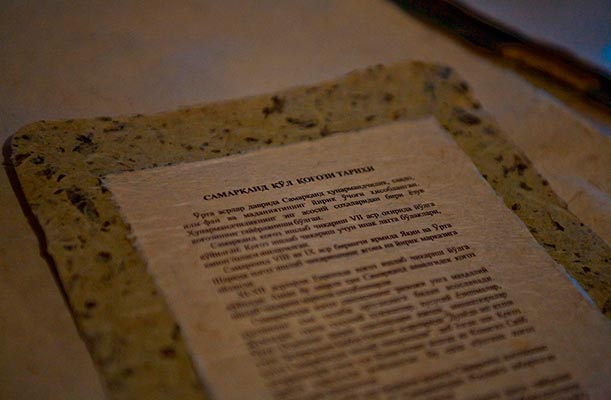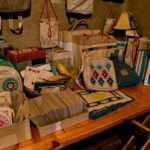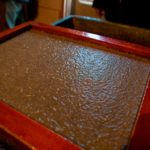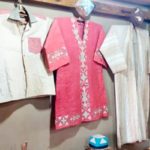10 kilometers from the center of Samarkand in the village of Konigil Samarkand paper mill is located. The peculiarity of paper production at this factory is that the secret of its manufacture was adopted in the Middle Ages by Chinese masters, and only with the help of UNESCO the lost formula was again found and revived to the full.
In a specially built paper workshop revived old recipes, which in the past brought a lot of fame to Samarkand masters of paper business. People who have visited the paper factory for the first time do not cease to be surprised at the process of paper production that opens up to them. Mechanisms involved in production, come into motion with the help of a huge water wheel that feeds in special containers the water of the great river Siab. Beginning with such an unusual discovery in the modern world, visitors step by step are immersed in the sequence of the paper making process, sometimes discovering things that they did not even know about in the assumptions.
The history of the factory itself is rooted in the distant past, then in Samarkand there was already organized paper production, but the first factory building was built only half a century later. The Egyptian paper glorified to this point quickly disappeared from the sale – its quality was noticeably inferior to that offered by the Samarkand masters. It is noteworthy that the Chinese have kept the process of making paper for a long time in the strictest secrecy. He went to Samarkand from fugitive warriors, successfully becoming one of the main trends of artisans of this city.
Paper was available to everyone – ordinary citizens and rich people. It was made from bleached linen fabrics, so in a city where weaving was also common, the paper was not a deficit. Very soon, in addition to white sheets, a colored paper came into life, each color of the sheet indicated some direction – especially important orders were printed on the yellow pages, red became a symbol of humanity, and blue – of sadness or death sentence. In the modern world, each of the colors is used exclusively for making jewelry of various kinds.


























